Banners for Rooms: Enhancing Spaces Through Creative Design
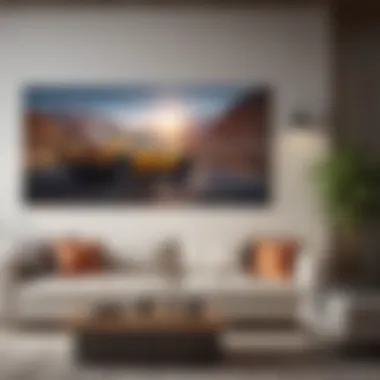
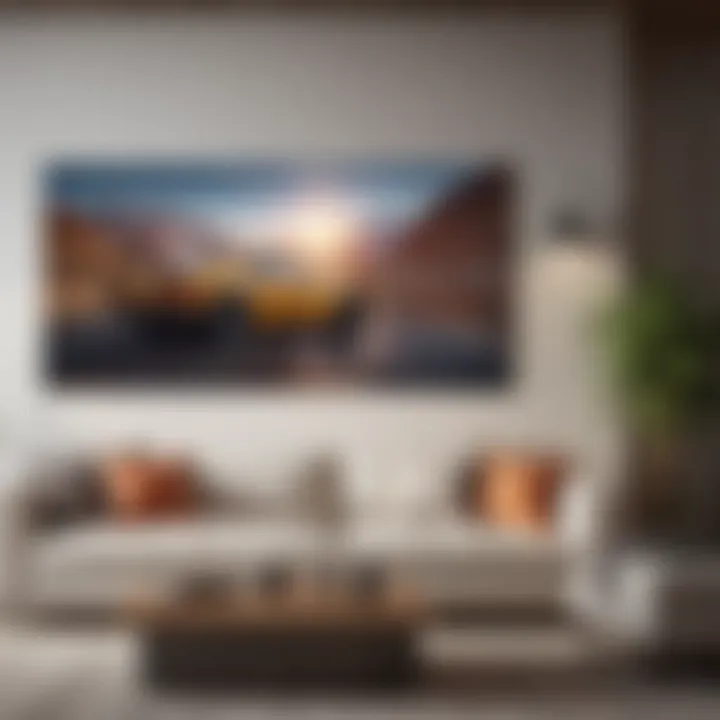
Intro
Banners serve as both functional and decorative elements within any room. They shift beyond simple fabric pieces to embody personal expression and thematic coherence. This article aims to dissect the various components of incorporating banners into room design, providing insights into style, materials, and usage.
As people's lifestyles evolve, so do their interior design preferences. Banners offer a unique avenue for customization, allowing individuals to curate a space that reflects their preferences or conveys a particular mood. Understanding the versatility of banners enhances one's ability to use them effectively.
From different materials to diverse designs, this article will guide readers on making informed choices when adding banners to their spaces. There will be exploration of practical considerations for displaying them, ensuring that functionality does not sacrifice aesthetic appeal.
Understanding the Role of Banners in Room Design
Banners play a significant role in room design, influencing both aesthetics and functionality. Their importance lies in how they contribute to the atmosphere of a space. When designed and placed thoughtfully, banners can enhance the visual appeal and serve specific purposes. From conveying messages to celebrating personal interests, they are versatile tools in interior decoration.
One crucial benefit of using banners is their ability to transform any environment quickly and easily. Unlike many other decor elements that might require extensive efforts to install or change, banners can often be set up in a matter of minutes. This flexibility allows individuals to change the mood or theme of a room in response to changing seasons, holidays, or even their own tastes.
Furthermore, banners can help in defining spaces within larger rooms. In an open area, for example, strategically placed banners can create visual boundaries. This benefits both larger residences and commercial spaces alike by guiding traffic flow and establishing separate functional zones.
There are important considerations when selecting banners. Material choice, design, and size must align with existing decor and the intended message of the banner. The aesthetic should be cohesive with surrounding decor. Anachronistic designs can clash visually, thereby diminishing the intended impact.
In summary, the role of banners in room design is multifaceted. They are essential not only for adding character and style but also for enhancing functionality. Understanding these elements allows for better decision-making when integrating banners into room decor.
Types of Banners for Room Decor
The incorporation of banners in room decor goes beyond mere aesthetics. Banners serve multiple functions, influencing the overall atmosphere while reflecting personal or brand identity. Different types of banners can alter a space significantly. Understanding each type and its specific purposes can guide the selection process for those looking to enhance their rooms thoughtfully. Here, we will explore three primary categories of banners: promotional, artistic, and informational. Each type offers distinct benefits and considerations for effective integration into room design.
Promotional Banners
Promotional banners are designed primarily for marketing and advertising purposes. They are often used in commercial spaces but can also be beneficial in private settings, such as party decorations or family events. The main goal of these banners is to grab attention and convey a specific message quickly.
- Key Characteristics: These banners usually include vibrant colors, bold fonts, and engaging images or logos. The visual elements are crucial for catching the eye of passersby.
- Benefits: They are effective in communicating promotions, sales, or events, significantly increasing visibility. In a home setting, promotional banners can be effective for celebrations like birthdays or anniversaries, adding excitement to the environment.
- Considerations: When using promotional banners indoors, one must ensure they align with the overall decor to avoid a jarring effect. Also, ensuring that the information presented is clear and concise is vital to prevent confusion.
Artistic Banners
Artistic banners are more about expression and creativity. They transform spaces into engaging environments. These banners often feature artwork, photography, quotes, or abstract designs.
- Key Characteristics: Artistic banners can vary in style and design, catering to diverse tastes and themes. From minimalist designs to intricate art pieces, they can complement or stand alone in any space.
- Benefits: They serve as focal points and can enhance the room's atmosphere, creating an emotional or aesthetic connection to the space. These banners can invite conversation and admiration, reflecting the personality and style of the inhabitants.
- Considerations: Selection should be mindful of color schemes and existing decor. An artistic banner that clashes with other design elements may disrupt the intended ambiance.
Informational Banners
Informational banners convey necessary information without the persuasion aspect that promotional banners employ. They can be especially useful in educational or functional spaces.
- Key Characteristics: These banners are characterized by straightforward and easily readable fonts along with organized layouts. They may include diagrams, instructional text, or signs that provide direction within a room or building.
- Benefits: Informational banners can enhance understanding and navigation in thematic settings, such as museums or workshops, making them more engaging for the audience. They can also bring clarity to a setting, which is particularly useful in crowded environments.
- Considerations: When employing informational banners, clarity should take precedence. The information must be presented in a way that is easily digestible, ensuring that the viewer can grasp the core details without effort.
In summary, the use of promotional, artistic, and informational banners can significantly impact the design of a space. Effectively integrating these elements can result in a cohesive atmosphere that enhances the intended purpose of any room. Understanding their roles and attributes will lead to more informed decisions in creating elegant and functional environments.
Design Principles for Effective Banners
When creating impactful banners for a room, understanding design principles is crucial. Good design brings cohesion and clarity, transforming simple decorations into powerful elements of interior design. The established principles include color psychology, typography, and visual hierarchy. Each of these components helps in conveying the intended message while also enhancing the aesthetics of a space.
Color Psychology in Banner Design
Color is not just a design choice but a way to influence mood and perception. Different colors evoke specific reactions. For instance, blue often creates a sense of calm, while red can provoke feelings of excitement and urgency. When selecting colors for banners, it is important to consider the emotional response desired from viewers. Colors should align with the overall theme of the room. For example, a calming palette could be fitting for a bedroom, whereas vibrant colors might suit a playroom or home gym.
In addition to individual colors, the combination of colors matters. Harmonious color schemes can unify a space, while contrast can draw attention to key areas. Therefore, applying color theory effectively can enhance the visual experience of banners significantly.
"Color is the keyboard, the eyes are the harmonies, the soul is the piano with many strings." - Wassily Kandinsky
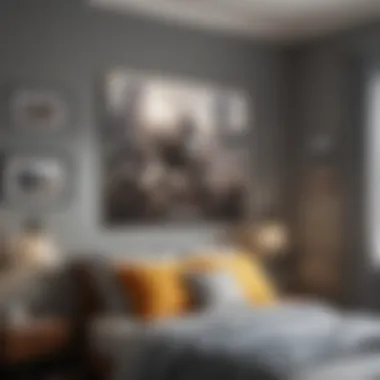
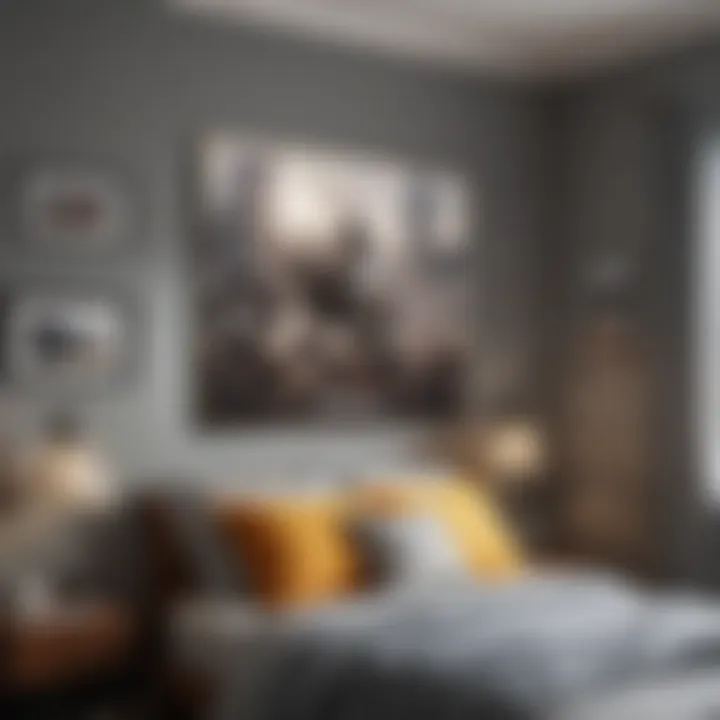
Typography and Readability
Typography plays an essential role in banner design. The choice of font affects both readability and aesthetic appeal. It is imperative to choose fonts that are easy to read from a distance, especially when banners are used for informational purposes. Sans-serif fonts are generally more legible than decorative fonts in large displays.
Beyond legibility, font choice also communicates personality. Bold, thick fonts might convey strength, while delicate script fonts might suggest elegance. It's vital to ensure that the typography matches the theme of the room and the message of the banner.
Ensure that there is enough contrast between the text and the background. Poor contrast can render even the best-designed fonts ineffective. Keep the number of different fonts to a minimum; usually, one or two will suffice. This provides a cleaner look and enhances readability.
Visual Hierarchy and Composition
Visual hierarchy is critical when designing banners. It dictates how viewers will interpret information. Audiences tend to scan from the top down and left to right, so key messages should be positioned strategically at eye level. This directs attention where it is most needed.
Composition also involves balancing elements within the banner. For instance, if a banner contains images alongside text, ensure that they are proportionate in size. Crowding too many elements can confuse or overwhelm viewers. Effective spacing creates breathing room, making the banner more appealing and easier to comprehend.
Incorporating these design principles — color psychology, typography, and visual hierarchy — leads to effective banners that enhance room design, exhibiting both an aesthetic and functional quality. When these principles are applied thoughtfully, the banner not only serves its purpose but also contributes to the overall atmosphere of the space.
Materials Used for Banners
Understanding the materials used for banners is crucial in selecting the right type for specific applications and designs. Each material offers unique benefits and considerations that can significantly impact both the aesthetic and functional aspects of the banner. The choice of material affects durability, ease of maintenance, and overall appearance. Thus, knowing these elements can enhance the effectiveness of banners in interior design.
Fabric Banners
Fabric banners provide a soft and elegant appearance that is often sought after in decorative settings. Common materials include polyester and satin. These fabrics can be printed with vibrant colors and intricate designs without losing quality. One advantage of fabric banners is their lightweight nature, which makes them easy to hang and transport. They are also typically machine washable, allowing for easy maintenance when dirt or dust accumulates.
From an environmental perspective, many fabric options are more sustainable compared to synthetic alternatives. They can be reused across multiple events or seasons, which aligns with eco-friendly practices. However, it is essential to ensure that the banner is printed with inks that are safe and do not fade under sunlight.
Vinyl Banners
Vinyl banners are a durable option suitable for both indoor and outdoor use. Made from synthetic materials, they employ advanced printing technology for high-resolution graphics. One of the major advantages of vinyl is its water and tear resistance, making it ideal for settings where wear and tear is a concern.
Vinyl banners tend to maintain their color and quality longer than fabric options, making them cost-effective in the long run for businesses or events needing signage. These banners often feature grommets or pole pockets for sturdy mounting options. However, vinyl is less eco-friendly than fabric, leading to considerations regarding environmental impact during production and disposal.
Paper vs. Digital Banners
The choice between paper and digital banners encapsulates a shift in how we think about material use in design. Paper banners are traditionally less expensive and readily available in various sizes and finishes. They are suitable for short-term use, such as corporate events or promotions. However, paper is less durable and may not withstand moist or high-traffic areas, leading to quick deterioration.
In contrast, digital banners represent a more modern and innovative approach. These banners can display dynamic graphics and changing content, which adds a layer of interactivity that paper simply cannot provide. Digital formats can also be easily updated, allowing for versatile applications across seasons or themes. Despite higher initial costs, the potential for wider reach and engagement can justify the investment.
Choosing the right material for a banner can significantly influence its longevity, cost-effectiveness, and visual impact. Understanding these materials opens up opportunities for more targeted and effective design solutions.
Thematic Integration of Banners in Room Design
The integration of banners within room design holds significant importance, as they serve not just as decorative elements but as dynamic features that can impact the overall ambiance. Banners have the ability to transform a space by introducing themes, colors, and visuals that resonate with the intended purpose of the room. When executed thoughtfully, they can harmonize with existing décor, reinforce desired aesthetics, and promote a coherent narrative throughout the space.
A key benefit of integrating banners is their versatility. They can be tailored to various themes, settings, and audiences. For instance, in a room dedicated to extreme sports, banners that feature bold graphics and action-packed imagery can energize the space, reflecting the enthusiasm and spirit of the activities associated with them. Moreover, banners can be designed to bring attention to specific areas, balancing visual interest while guiding the viewer’s focus.
Considerations regarding thematic integration include ensuring that the chosen banners align with the room's color palette and intended mood. This approach fosters a cohesive design instead of disjointed elements. Additionally, the context of the banner—whether it relates to the purpose of the room or encapsulates personal interests—can contribute to the overall harmony of the space.
Aligning with Existing Decor
Aligning banners with existing décor is crucial for a seamless look. This means considering the style of furnishings, color schemes, and overall theme of the room. A banner in a room filled with neutral tones might benefit from subtle colors to maintain a soft ambiance. Alternatively, a sport-themed room could feature vibrant colors and bold designs to create a sense of excitement.
The materials used for banners also play a role in this alignment. For instance, a canvas banner with a textured finish can complement rustic décor, while a sleek vinyl banner would suit a contemporary setting. It is useful to make selections that not only fit the aesthetic of the space but also contribute to its function.
Seasonal and Event-Specific Banners
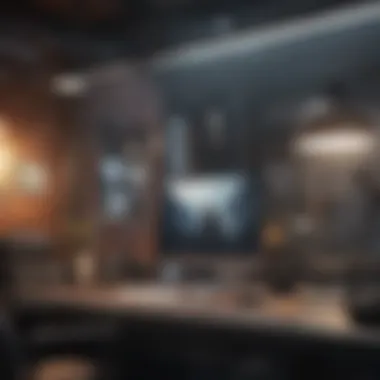
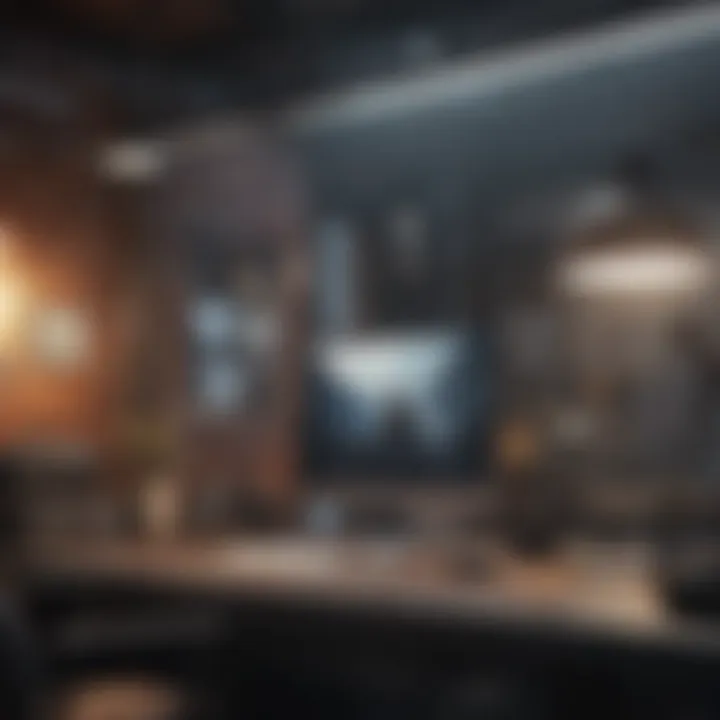
Seasonal and event-specific banners offer unique opportunities for thematic integration. These banners can reflect holidays, seasons, or special events and must resonate with the room's purpose. For example, a winter-themed banner adorned with snowy landscapes can create a cozy atmosphere in a lounge area. Similarly, a summer banner might showcase beach scenes, infusing the space with warmth and vibrancy.
Utilizing these banners strategically can maintain and enhance the personality of a room throughout the year. Changing banners according to seasons or events keeps the space feeling fresh and relevant. This dynamism allows individuals to express themselves and their changing interests while ensuring the room always feels curated and inviting.
"Banners are not mere decorations; they are integral to how a space is perceived and experienced."
Practical Considerations for Displaying Banners
Understanding how to effectively display banners is crucial for maximizing their impact in any room. The banner’s visibility, placement, and mounting significantly influence the overall aesthetic and functionality of the space. By taking into account these practical considerations, individuals can transform their environment to reflect their style and intent while ensuring that messages conveyed through banners are communicated clearly.
Placement and Visibility
Placement of banners within a room is vital. A well-placed banner can serve as a focal point or accent without overwhelming existing decor. Consider the following elements:
- Eye Level: Banners should be displayed at eye level whenever possible. This enhances visibility and ensures that viewers engage with the content directly.
- Lighting: Proper lighting can enhance the banner's visibility. Avoid placing banners in dimly lit areas, as this can obscure the design and message.
- Proximity to Audience: Banners near seating areas or high-traffic zones capture attention more effectively. Think about where people will naturally gather when deciding where to display your banners.
- Complementing Decor: The banner should harmonize with the room's overall design. Its colors, themes, and textures should enhance, not clash with, surrounding elements.
Remember, thoughtful placement combines functionality and aesthetics, driving engagement and appreciation for the banner.
Mounting Options and Best Practices
Proper mounting of banners is essential to ensure durability and aesthetic appeal. Different mounting methods are suitable for various types of banners and settings. Here are some effective practices to consider:
- Hanging Solutions: For fabric banners, consider using grommets and strings or hooks for easy hanging. This technique allows for quick installation and removal, adapting to seasonal changes or different themes.
- Adhesive Strips: For lighter banners, adhesive mounting solutions can simplify the process. Select products that are strong yet removable, to avoid damage to walls.
- Frame Displays: Utilizing frames can elevate the banner's appearance, providing a polished look while protecting it from wear and tear. Frames are particularly useful in commercial spaces where presentation matters.
- Weighted Bottoms: For larger banners, weights can stabilize the banner and prevent it from blowing around if positioned in breezy areas. This precaution preserves the banner’s integrity and visual clarity.
Maintaining proper mounting techniques not only enhances the banner’s lifespan but also contributes to the room's overall professionalism and design coherence.
"The right placement and mounting of banners can turn a simple room into a dynamic, engaging space that reflects personal taste and intention."
By addressing placement and mounting methods thoughtfully, users can ensure their banners deliver a message effectively, all while enhancing the visual appeal of their space.
Personalization Through Custom Banners
Personalization plays a crucial role in room decor, as it allows individuals to express their identity and aesthetic preferences. Custom banners serve as a versatile tool in this aspect, adding a personal touch to any space. They enable the integration of individual styles and stories, transforming generic rooms into unique environments. Customization provides various benefits, such as creating a strong emotional connection to the space and enhancing the overall atmosphere. This section explores how to incorporate personal elements and reflect personal interests through banners.
Incorporating Personal Elements
When it comes to banners, including personal elements enhances both their aesthetic and emotional value. Families may choose to display meaningful quotes, images, or motifs that resonate with their experiences. For instance, displaying family photos on a fabric banner can create a warm, inviting atmosphere. Similarly, using colors that reflect personal preferences or memories can create a deeper connection to the room.
Essential considerations include:
- Content: Choose images or texts that hold significance to you or your family. This could be anything from travel photographs to favorite quotes or artistic designs.
- Colors and Materials: Select colors that resonate with your desired mood. Choosing the right material, like canvas or vinyl, can also impact the overall feel of the banner.
- Size and Placement: Ensure the size is appropriate for the space, allowing for balance with existing decor. Placement is also key; it should be in a location where it can be appreciated and add value.
Custom banners enable the amalgamation of personal stories into the physical environment, allowing for a more immersive and representative experience of the inhabitants.
Using Banners to Reflect Personal Interests
Banners offer an excellent opportunity to reflect personal interests and hobbies within a room's design. For those passionate about particular sports, music, art, or any other special interest, custom banners can serve as a showcase for these elements. By featuring logos, artwork, or motifs related to these interests, the room becomes a vivid extension of one’s personality.
Some effective strategies include:
- Sporting Themes: For athletes or sports enthusiasts, incorporating team colors, logos, or inspirational quotes from athletes can create a dynamic atmosphere.
- Artistic Representation: Artists might choose to display their own artwork or styles that inspire them, transforming a room into both a workspace and a gallery.
- Music Influence: For musicians or music lovers, banners featuring favorite bands, album art, or lyrics can instill creativity and passion into the space.
Through these banners, individuals can celebrate their passions, create conversation starters, and design a space that feels uniquely theirs.
"Custom banners not only enhance the visual elements of a room but also foster a deeper emotional connection with the space."
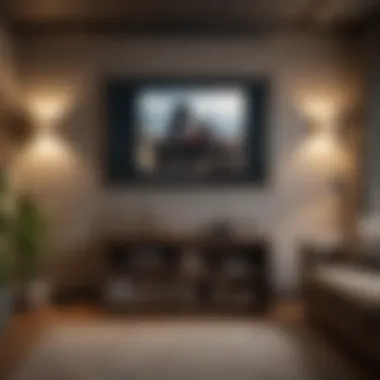
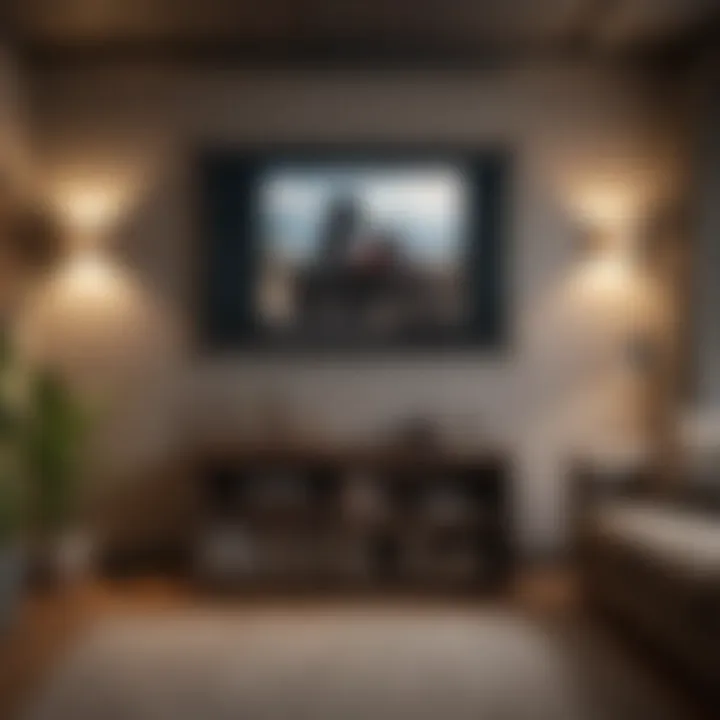
Maintenance and Care for Banners
The maintenance and care of banners is crucial in preserving their aesthetic appeal and functionality. Banners, whether for commercial or private use, undergo wear and tear over time. Proper care not only enhances their longevity but also ensures that they continue to meet their intended purpose effectively. Regular maintenance helps avoid fading, tearing, or other forms of damage, allowing the banners to contribute positively to the space they adorn.
Considerations around maintenance encompass understanding the materials used in your banners, appropriate cleaning methods, and suitable storage solutions when the banners are not in use. Each of these factors plays a significant role in extending the lifespan of banners, and ignoring them might lead to untimely replacements, which can be costly.
Cleaning Techniques for Different Materials
Different materials used for banners necessitate varied cleaning techniques to ensure that they are preserved without damage. Here are some common materials and their appropriate cleaning methods:
- Fabric Banners: These banners can be machine washed on a gentle cycle. It is wise to use a mild detergent. For tough stains, a soft brush may be required. Always air dry fabric banners, as high heat from dryers can damage them.
- Vinyl Banners: Cleaning vinyl is generally straightforward. A mixture of warm water and mild soap usually suffices. Using a soft cloth or sponge will help clean the surface without scratching it. Avoid harsh chemicals that might corrode the material.
- Paper Banners: Paper is delicate and should be approached with caution. Dusting regularly can help maintain them. If they get dirty, a barely damp cloth can be used, but too much moisture should be avoided to prevent warping or tearing.
These diverse materials underline the necessity of tailored cleaning strategies. Each banner requires specific attention to detail to ensure they retain their original condition.
Storage Solutions to Prolong Life
After cleaning, proper storage extends the life of banners significantly. Here are effective storage solutions:
- Roll Instead of Fold: Rolling banners is preferable to folding them. This avoids creasing and potential tearing.
- Use Protective Sleeves: For fabric or paper banners, consider using protective sleeves or bags. This guards against dust and light exposure, which can cause fading over time.
- Climate Control: Store banners in a controlled environment if possible. High humidity can lead to mold on fabric banners, while extreme heat can warp vinyl.
- Organize Carefully: Categorizing banners by size and material can ease access and reduce handling damage during retrieval.
By implementing these storage techniques, the life and quality of banners can be preserved, making future use easier and more enjoyable.
Proper maintenance and thoughtful care allow banners to shine in their role, transforming spaces beautifully while also saving costs in the long run.
The Future of Banners in Interior Design
Banners hold significant potential in the realm of interior design, advancing beyond traditional uses. Their evolution reflects the current trajectory of design trends and technological progress. Understanding the future of banners can illuminate their role in creating spaces that are not only aesthetic but also functional and emotionally resonant.
Effective banner usage is about more than mere decoration. It incorporates principles of creativity, innovation, and adaptability. As designers and homeowners look for ways to personalize their environments, banners can provide that flexible solution. They can easily adapt to changing seasons, trends, or even individual preferences.
Trends Influencing Modern Banner Design
Modern banner design is influenced by several key trends. First, minimalism has gained popularity in recent years. This trend emphasizes simplicity and functionality, guiding how banners are created. Designers opt for clean lines and basic shapes which allows the message or visual to be clear and impactful.
Second, sustainable materials are on the rise. More consumers are becoming environmentally conscious. Consequently, designers are incorporating eco-friendly fabrics or recyclable materials into banner production.
Lastly, personalized designs are becoming increasingly sought after. The ability to create custom banners that reflect personal style and sentiment enhances the charm of a space. Banners are no longer static. Instead, they are extensions of the individual's taste or brand identity.
Technological Innovations in Banners
Technology has profoundly impacted the banner industry, especially in terms of production and functionality. Digital printing techniques allow for vibrant colors and intricate designs, enabling limitless creative options. Moreover, the use of augmented reality in banners offers an immersive experience. By interacting with these banners through smartphones, audiences can glean additional information or enjoy animated visuals.
Another technological advancement involves the integration of smart elements. Banners can now incorporate sensors to change displays based on environmental factors, such as lighting or audience engagement.
Case Studies: Successful Banner Implementations
In the context of room decoration, the implementation of banners serves as a practical example of how design can enhance spaces effectively. This section explores two critical environments: commercial spaces and private residences. Each example illustrates the potential impact that thoughtful banner application can have on ambiance as well as functionality.
Commercial Spaces
In commercial environments, banners often play a dual role, attracting attention and conveying essential information. For instance, businesses such as coffee shops or retail stores have utilized large, visually attractive banners to promote sales or events. These banners are designed to engage customers, drawing them into the space while also informing them about products or promotions. A case study of a local cafe demonstrates this use perfectly. When they introduced an eye-catching banner highlighting their seasonal specialty drinks, foot traffic increased significantly. The color scheme and typography were aligned with the overall brand aesthetics, reinforcing brand identity while attracting customers.
Moreover, effective use of banners in commercial spaces includes considerations about placement. A restaurant might place a banner outside its entrance to entice potential diners, or within the dining area to direct them towards daily specials. This strategic positioning maximizes visibility, ensuring that important information reaches the audience right when they need it.
Private Residences
The use of banners in private residences showcases a different kind of creativity and personalization. Homeowners often opt for custom banners that reflect their interests, hobbies, or milestones. For example, a family celebrating a milestone birthday or anniversary might design a personalized banner to commemorate the occasion. This creates a festive environment that feels intimate and special, enhancing the overall experience of the event.
In a specific case, a family made the decision to decorate their living room for the holidays with themed banners. By choosing warm colors and festive imagery, they transformed their space into a cozy, inviting area. The banners not only added to the aesthetics but also created a sense of warmth and nostalgia.
Additionally, private residences may utilize banners for practical purposes too. A home office might showcase a banner with motivational quotes or reminders, serving as both decor and daily inspiration. This reflects how banners can be multi-dimensional—merging art with functionality seamlessly.
Thanks to these case studies, it is clear that the proper use of banners can elevate both commercial and residential spaces. Consideration of the principles outlined earlier—such as design principles, materials, and thematic integration—plays a crucial role in achieving successful implementations. These examples are simply a glimpse into the potential that exists for creatively incorporating banners in various spaces.







